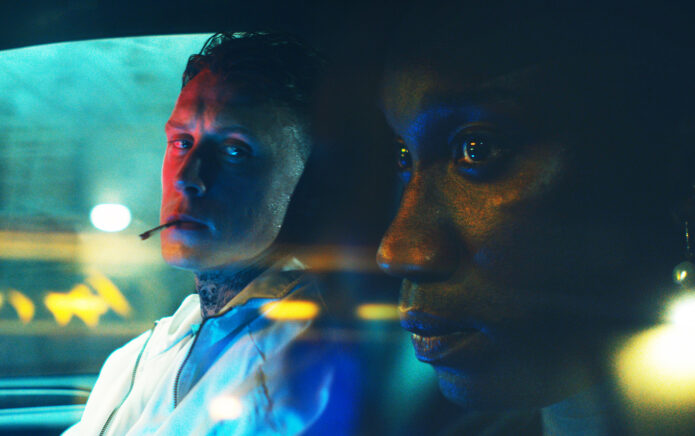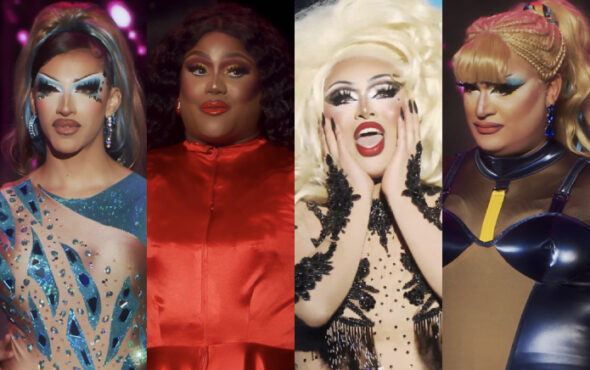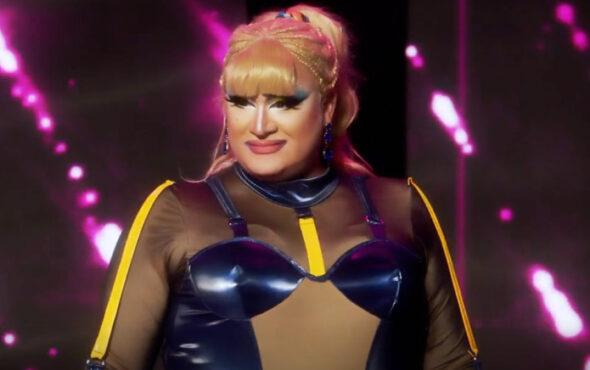
Drag kings are usually cisgender women, transgender men or non-binary people performing on stage in masculine drag. Like drag queens, they explore style, gender and politics through lip sync, comedy, dance and song. But though they have received much less mainstream media attention, drag kings are nothing new.
“Most people just don’t know what drag kings are,” says Welsh-born drag king Len Blanco. But drag kings do, in fact, have a rich and long history. The presence of their art can be traced back to the 1660s when women were first allowed to appear onstage. During the late 1800s and early 1900s, many drag kings also worked in music halls.
And though no one is entirely certain, many credit Stormé DeLarverie, a lifelong gay rights activist and drag king for throwing the first punch of the Stonewall Uprisings. “Stormé DeLarverie was performing at a pub called the Stonewall Inn in drag and was pulled out by police for essentially breaking a dress code law,” explains Dishi Sumac, a drag king and journalist currently working in London. “The reason we have the Stonewall uprising is because of a drag king”.
This history is often felt by kings as they perform today. “It feels like a responsibility. Drag’s history is inherently queer and politicised so the pure act of doing drag is radical,” says Dishi, “particularly when you’re sharing that radical experience with other people on a line-up or with an audience in the room”.
Yet, despite drag kings being around for hundreds of years, their art has largely gone unpublicised. “I’m so aware that our history can be erased so easily,” says Len Blanco. “Drag kings are not new, but we’ve been practically wiped out of public consciousness. I’m part of an artistic community that is so close to invisibility. You feel that you have to make ten times the amount of noise so you’re seen but also so people realise your art isn’t just a kooky little thing.”
View this post on Instagram
Sumac is a fairly new king on the circuit but has been “obsessed” with drag and “appreciated the art form” for a long time. They recall the first time they saw drag queens at Pride in London as a teenager: “I had never seen such an expression of identity like that,” they say.
In the years following, Sumac regularly attended drag nights in LGBTQ+ spaces across London including The Royal Vauxhall Tavern. “The first time I saw a drag king was at the Man Up! competition at The Glory in Hackney,” they say. “As soon as I knew drag kings were a thing I thought maybe there was space for me in the world of drag.”
Their first performance was part of a seven-week-long competition earlier this year. “It was kind of like a boot camp that gave me the opportunity to really hone in my act,” says Sumac whose drag persona pokes fun at British prime minister, Rishi Sunak. “I’m guaranteed to be the only Tory you want to see in their boxers,” they say. Although with such a clear political influence central to their drag personality, Sumac hopes they won’t be doing this act forever.
“Based on my political beliefs I hope my current drag career is limited because I want Rishi Sunak to get kicked out of government pretty soon,” they say. “I hope I’d have enough in my back catalogue to develop something different…drag has connected me with who I am. It allows me to feel both feminine and masculine at the same time. Often I feel like I have to pick one or the other, even though I’m non-binary.”
Despite working as a drag king for over 12 years, Adam All still remembers his first time performing in public as being “utterly terrifying”. “I did a lot of it on auto-pilot so I don’t really remember [what it was like],” he says. Now, All describes his drag as “cartoon flavoured” and “nutritious masculine”, but “an antidote to toxic masculinity”.
Through original song and plenty of “puns and gags”, All sets out to dismantle the patriarchal systems of our current time and challenge stereotypes; “because masculinity can be beautiful,” he explains. Blanco agrees, explaining that he originally tried drag as a means of “gender expression”. “Now I’m secure in that, it is more about developing a relationship with an audience,” he says.
View this post on Instagram
Blanco describes the high moments of performing in drag as “euphoric,” but talks of the hardships too. “I’m never fearful of performing in drag. I can deal with hecklers,” he explains. “But I experienced transphobia on a bus once when I was wearing a moustache. I don’t tend to wear my drag while I’m travelling.” Sumac adds: “Drag is expensive to do. There are hair pieces, costumes and make-up but I think the cost that often gets forgotten is the travel. It is genuinely unsafe to get on the night bus if you’ve finished a gig.”
Sustaining a career in drag is somewhat of a minefield, particularly considering the current lack of arts funding in the UK. “Many of us have to see it as a hobby,” says Sumac. All works as a full time drag king; “It pays my bills and like any form of performance or self-employment it ebbs and flows. It is hard […] certainly when you start out,” he says.
“If I tried to live on my drag bookings alone, I’d be dead,” admits Len Blanco. “I also have to think about my art in line with the money I make. I could commodify or make my work more mainstream, and there’s nothing wrong with that. But for me, it would feel like a twist.”
The mainstream drag Blanco talks of can be seen to be directly informed by RuPaul’s Drag Race. The show, which began in the US in 2009, catapulted drag into mainstream cultural consciousness. “Predominantly, we see queens, which is great. But the drag that I do isn’t seen a lot in the mainstream, if at all,” says Sumac. “As the demand for drag is growing, I think what we see of it on TV is doing the people who love the art a disservice.”
“Where would my career be without RuPaul?” considers Blanco. “I don’t know. But it isn’t the only form of drag out there.” Guy Alias, a drag king based in Canberra, Australia agrees that RuPaul has only profiled “one kind of drag”.
View this post on Instagram
“I don’t think a king could ever appear on that show because it is so centred on queens, gay men and the evolution of femininity,” he says. “When people think of the queer scene, they tend to think of the gay male scene, which is wrapped up in the patriarchy. It means a lot of people – including kings – aren’t seen”
Although Alias’s own drag is “glamourous and colourful,” he believes that many “masculine” kings are criticised through the lens of mainstream drag, which is very femme focused. “Kings are very different from queens. People like to compare them but it is a totally unique type of performance…often they’re performing a hyper masculinity”.
All adds: “[Queens and kings] live under the same umbrella but we are saying very different things… [People] assume it must be basically the same thing but with different clothes. It is not. We are speaking about different restrictions, different expressions and different expectations from society”.
Being a drag king is more than about performing, though. The community of drag kings is “pretty close and very brotherly,” says All. “I counted the other day that I must have around 90 drag children,” adds Blanco. “Being supportive and communicative is just the baseline. I’ve learnt a lot from other kings about how to conduct myself in the world.”
View this post on Instagram
“In Australia, there are even fewer of us, so we really tend to stick together,” explains Alias, who recently helped put on a world record-breaking show in Sydney featuring 80 drag kings – the most to ever to appear on a line-up together. “It was the biggest show of drag kings ever, and it is a community I’m proud to be part of,” he says.
So, what does the future hold for drag kings? “I’d like to think that different types of people and drag can be celebrated,” says Alias. “I want drag to continue to expand in its exploration without being shut down,” adds Blanco.
“We shouldn’t be pushed into corners, whether that be geographically or artistically…I would like my drag to be able to take me to other, bigger, places”. All agrees: “I want drag kings to be a globally recognised art form, the same as queens… You’ll find me front and center on the battlefield to make that happen.”



